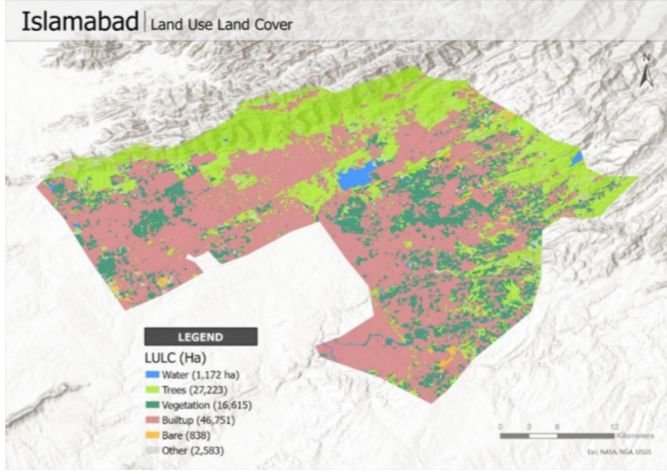PMRC: Tackling Pakistan's Housing Shortage
Date: 02 July, 2024
Introduction
Pakistan Mortgage Refinance Company (PMRC) is a market-driven mortgage liquidity facility committed to expanding affordable housing finance in Pakistan. In addition to refinancing, PMRC builds capacity within the housing finance sector, drives product innovation, and collaborates with stakeholders to make housing finance accessible to a broader population
The Challenge
PMRC faced a multifaceted challenge regarding housing data that needed to be addressed. A major issue was the widely quoted housing shortage of 10 million, cited by many sources like the World Bank, which our research found to be inaccurate. The lack of reliable and primary data in the housing sector contributed to this misunderstanding and the resulting housing deficit.
In 2023, Pakistan's population surged to 241.5 million from 235.8 million in 2022, further increasing the demand for affordable housing. Additionally, the mortgage-to-GDP ratio stagnated at a mere 0.32%, highlighting the urgent housing shortage crisis that needed immediate attention. While recent years saw significant growth in housing and construction finance, primarily due to government and State Bank of Pakistan (SBP) initiatives, this growth slowed considerably, revealing potential obstacles in the market dynamics that needed to be addressed.
PMRC recognized that addressing these challenges required a data-driven approach to accurately assess the market's needs and develop practical solutions.
Role of Akademos
In 2023, PMRC partnered with Akademos to conduct comprehensive research on Pakistan's housing market. The study analyzed the current housing landscape, including supply, demand, and the housing shortage. The main goal was to conduct demand and supply analysis and identify areas for improvement in the market, pinpointing areas for expansion. After a meticulous investigation.
Action Steps of Akademos
Akademos undertook a meticulous and comprehensive research approach. The study spanned 14 major cities, including Karachi, Lahore, Islamabad, Quetta, Gilgit, and Peshawar, ensuring a broad and representative data set.
The approach combined various methodologies to gather both quantitative and qualitative data.
- Household Surveys:
- In-depth Interviews:
- GIS Mapping:
- Secondary Research:
- Data Analysis:
Over 4000 households across the targeted cities were surveyed. The respondents were strategically sampled based on various income levels. The survey questionnaire examined housing trends, ownership status, demand, preferences, supply factors, financial considerations, and future projections based on demographic and socioeconomic variables.
30-in-depth interviews were conducted with industry stakeholders and experts. These interviews provided insights into market trends, obstacles, opportunities, and how government policies impacted affordable housing. They also provided a deeper perspective on conventional and Islamic housing financing demand.

Using satellite imagery and advanced geospatial data analysis techniques, Akademos employed GIS mapping to compile extensive data on land cover, land utilization, and architectural structures within designated project zones. This facilitated the precise delineation and classification of building footprints, sizes, functional purposes (residential or commercial), and horizontal and vertical measurements.
Secondary research was also utilized to validate and supplement primary research findings. Data from the census, Household Integrated Economic Survey (HIES), and online real estate platforms like Zameen.com were used.
The data was then analyzed to examine the key research parameters, which were housing needs and demand, housing supply, the housing shortage gap, and affordability and quality of housing. The analysis helped identify specific challenges and opportunities within the market, giving space to targeted policy and strategic recommendations.
Project Hurdle
The secondary research was inconsistent which made finding accurate data for Akademos difficult. The inconsistent estimations of the annual housing demand, the backlog of existing homes, and the anticipated shortages of future housing were among the main research difficulties.
Even though these criteria were widely accepted, there was a great deal of variation in the estimates already available, making it difficult to determine the precise size of the housing shortage. This problem highlighted the importance of creating novel approaches to offer trustworthy and current insights into the public's housing needs.
Research Findings
Akademos' research depicted a vivid and complex picture of Pakistan's housing sector. Here are some key findings regarding the housing industry:
Housing Demand and Deficit
The study found a significant gap between housing need and existing housing supply, resulting in an estimated shortage of approximately 2 million units. Most of this shortage occurred in urban areas with the highest demand, and millions of households were actively looking for housing. The issue extended beyond just the number of housing units available, encompassing substandard construction, overcrowding, and affordability problems. These issues affected a large portion of households, highlighting the complexity of the housing crisis in Pakistan.
Consumer Preferences and Behaviors
The study revealed diverse patterns in consumer behaviors and preferences. Budgets for home purchases and rentals varied significantly across cities. For instance, the average purchase budget in some cities was significantly lower than in others, with notable differences also observed in the rental market. Additionally, around 17% of the market was actively looking for housing, nearly half (47%) comprised previous customers who had recently built or bought a home, and the remaining portion was divided between those not actively searching for houses and those who intended to purchase one soon.
Housing Needs and Challenges
Population growth has become a prominent catalyst for increased housing demand, with rapid urbanization further accelerating this trend. This has led to compounded overcrowding issues and inadequate infrastructure, with a significant percentage of households living in cramped conditions and lacking essential utilities like gas, electricity, and piped drinking water. Housing affordability emerged as a pressing concern, particularly for urban households in the lowest income quintile. These trends highlighted the urgent need for targeted interventions to address housing challenges and ensure access to adequate and affordable housing for all segments of the population.
Results
Akademos' thorough research outcomes have equipped PMRC with a detailed awareness of Pakistan's housing market.
Despite the convoluted housing landscape, this analysis has helped PMRC identify numerous opportunities to improve the housing sector. Based on this, PMRC can devise strategies to alleviate the housing shortage, enhance affordability, and improve housing quality for a broader demographic
With this knowledge, PMRC is well-positioned, confident, and reassured in its ability to effect significant change, fostering a more inclusive and sustainable housing environment in Pakistan




